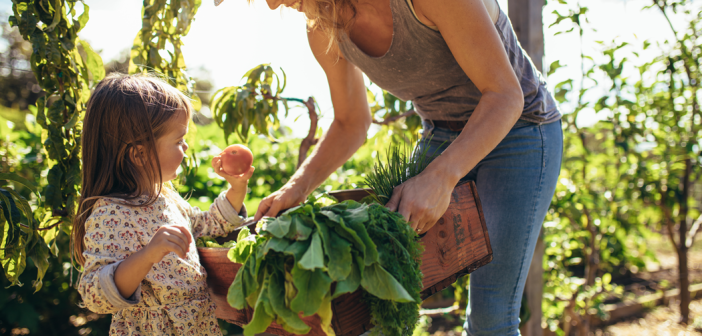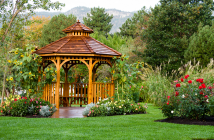In landscaping and erosion control, stabilizing sloped surfaces is a major challenge. Steep slopes are especially vulnerable to soil erosion and water runoff, which can cause long-term environmental damage if not properly managed. Traditional seeding methods often aren’t effective for these conditions.
One such solution is hydroseeding, a new technique that could change how we manage sloped terrain. We’ll look at how hydroseeding works, its benefits over traditional methods, and why it is particularly good for sloped surfaces. This article aims to provide a complete guide on using hydroseeding for effective erosion control and vegetation growth on slopes, including understanding the process, tackling specific challenges, and offering practical tips.
Hydroseeding Overview
Hydroseeding is a modern method where a hydroseeding company mixes water, seeds, fertilizer, and mulch into a slurry, and then sprays it onto the ground. This hydroseeding slurry provides instant ground cover and keeps the seeds in place better than traditional dry seeding. Hydroseeding is useful not only for planting grass but also for landscaping and controlling erosion because it works well on different types of surfaces.
It is especially effective on uneven or erosion-prone areas, ensuring strong and even seed growth. The mulch in the slurry helps keep moisture in, supporting seed establishment and growth. This method speeds up the seeding process and offers long-term environmental benefits, making it a top choice for professionals working with difficult terrain.
Why Sloped Surfaces Require Special Attention
Managing sloped surfaces comes with unique challenges that need special attention. One major issue is soil erosion, where gravity pulls soil downhill, destabilizing the terrain. This not only removes the nutrient-rich topsoil but also causes significant environmental damage. Another problem is water runoff. As rainwater flows down a slope, it can quickly erode the soil and carry pollutants into nearby water bodies, causing further ecological harm.
Establishing plant cover on slopes is also tough. Gravity and runoff can wash away seeds before they can take root, making traditional seeding methods less effective. These challenges show the need for tailored approaches. Effective slope management requires strategies for controlling erosion, managing water runoff, and establishing strong vegetation. By addressing these needs, one can ensure long-term stability and ecological balance for sloped terrains.
Advantages of Hydroseeding on Slopes
Hydroseeding has several advantages for stabilizing slopes, making it an excellent method for this purpose. It can cover large areas quickly, which is a must for preventing soil erosion right away. The slurry mixture used in hydroseeding sticks to the soil better than traditional methods, keeping the seeds in place even on steep slopes.
This helps seeds germinate better because the mulch keeps them moist and protected. Additionally, hydroseeding is cost-effective because it requires less labor and time compared to hand-seeding or installing sod. Overall, these benefits make hydroseeding an efficient and effective way to manage the challenges of sloped terrains.
Step-by-Step Process of Hydroseeding on Sloped Terrain
To effectively hydroseed on sloped terrain, start by preparing the site: clear any existing vegetation and debris, then smooth out rough areas and create a stable surface by grading the slope. Next, test and amend the soil to ensure proper pH and nutrient levels, which will enhance seed growth.
Mix the hydroseeding slurry, which includes water, seed, mulch, and fertilizer, in a specialized tank. Spray the mixture evenly across the prepared slope, making sure to overlap passes for complete coverage. After application, keep the soil consistently moist to aid germination. Regularly monitor for erosion and reapply mulch or seed as needed.
Challenges and Considerations
Hydroseeding on sloped terrains has its own challenges and important considerations. First, choosing the right type of seeds is key because different species grow and develop roots at different rates, affecting their suitability for specific terrains. Additionally, weather conditions play a major role; extreme temperatures or heavy rainfall can prevent the seeds from establishing, washing away the slurry before it adheres to the soil.
Regular maintenance is also essential to prevent erosion or poor plant growth. To address these issues, it’s recommended to select hardy, fast-germinating seeds, monitor weather forecasts closely, and create a maintenance schedule that includes watering, mulching, and re-seeding if necessary. By considering these factors and implementing specific strategies, you can greatly improve the chances of successful vegetation growth on sloped surfaces.
Hydroseeding presents an effective solution for stabilizing sloped terrains by addressing the unique challenges of erosion and water runoff. Its method of applying a seed, mulch, and nutrient slurry ensures better adhesion to the soil, promoting robust seed germination even on steep slopes. The process’s efficiency and cost-effectiveness make it superior to traditional seeding methods, providing immediate erosion control and long-term environmental benefits. By carefully preparing the site, selecting appropriate seeds, and maintaining consistent moisture, hydroseeding can transform vulnerable slopes into stable, green landscapes. This technique offers a sustainable and practical approach to managing difficult terrains, enhancing both functionality and ecological health.




